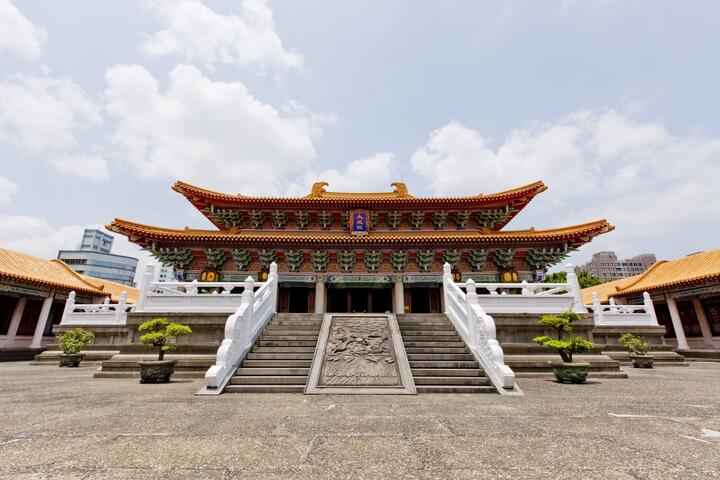Taichung Confucius Temple Introduction
The current Confucius Temple primarily promotes Confucianism but also embraces other philosophies, with altars for previous sages and wise figures. At the Taichung Confucius Temple, visitors can learn about the temple's origins, architectural complex, the Grand Worship Ceremony for Confucius, the Dacheng Music, artifacts of the temple, biographical sketches of sages, the Great Unity chapter from the Doctrine of the Mean, and the Eight-Dance Performance. The temple is also an ideal venue for hosting large cultural events, filming, or workshops. The architectural style follows classical references, but with careful consideration and consultation with experts and scholars, along with references to the Qufu County Chronicles and other local literature, a decision was made to adopt a Song Dynasty palace style. This style is chosen for its grandeur, dignity, simplicity, and magnificence, while the layout is a scaled-down version of the Qufu Confucius Temple's arrangement. The total land area of the temple is 23,653.20 square meters, with buildings covering 2,363.88 square meters. As a classical structure, it is one of the few Song-style buildings in Taiwan, featuring a complex and varied structure with intricate decorations. The construction involved precise detailing such as concrete pouring, formwork assembly, and rebar placement, with each detail accurately corrected and decorative finishing requiring meticulous craftsmanship. All the hall paintings in the Confucius Temple are also in the Song style, primarily featuring spiraling floral motifs, with variations in color depth to depict shapes. The construction is exceptionally detailed and intricate, making it one of the rare architectural models in Taiwan worth studying and appreciating. The overall architectural complex of the Confucius Temple includes elements such as the Paifang (two gates representing the connection of past and present, and virtue comparable to heaven and earth), the wall screen, the Lingxing Gate, the front courtyard of the Panchi Pond, the Guande Gate, the Yucui Gate, the Liao Pavilion, the burial site, the Dacheng Gate, the Dacheng Hall, the East Wing, the West Wing, and the Chongsheng Shrine, making it one of the most complete Confucius Temples in Taiwan. In addition to the floor plan imitating Qufu, architectural vocabulary and elements from Qufu, such as the Guande Gate and Yucui Gate, were adopted, distinguishing them from the Minnan-style construction's ceremonial gates and righteousness roads. Although it is a new reinforced concrete structure, the Confucius Temple embodies a retro spirit and presents a cohesive image, being regarded as a pioneer of new architecture in the classical Chinese style.



































